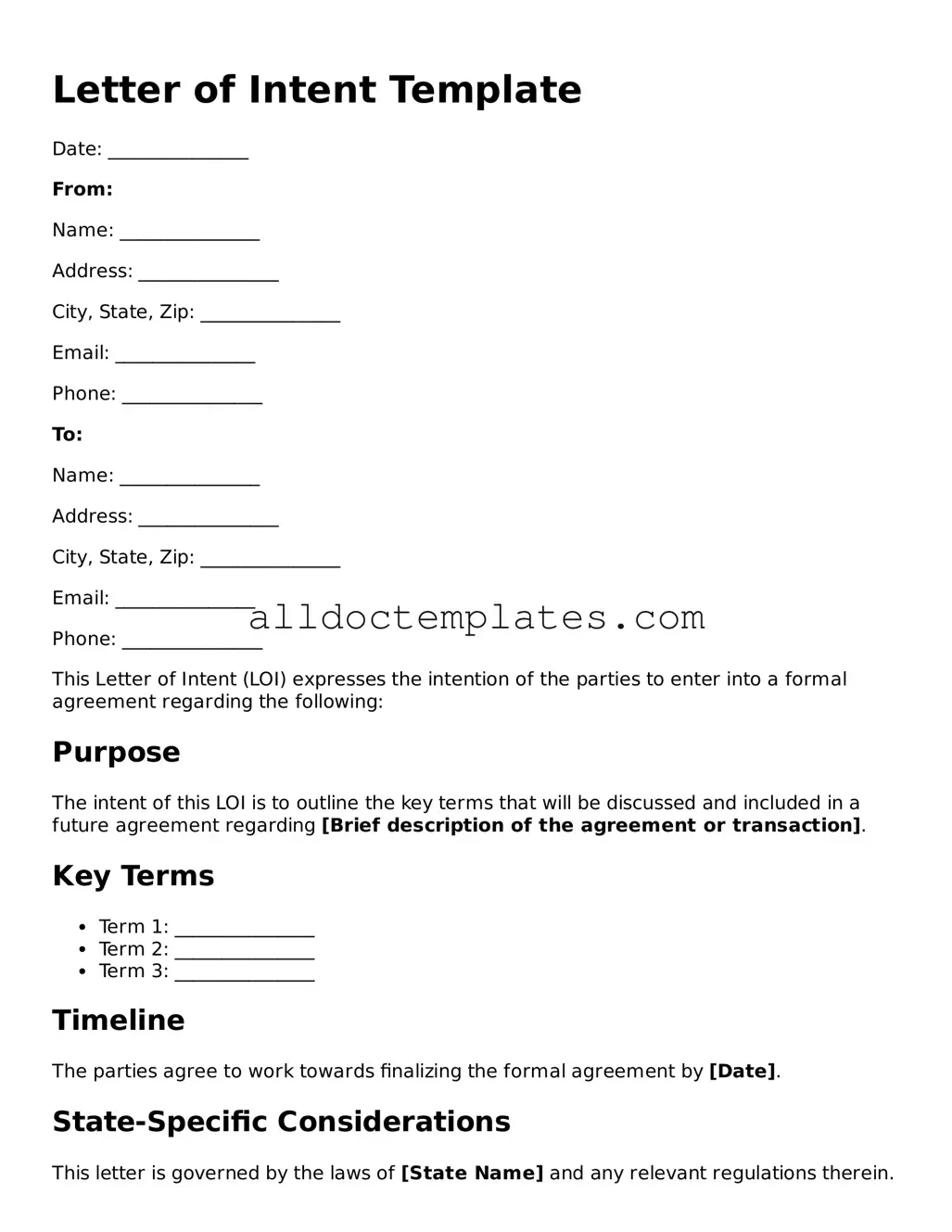Letter of Intent Template
Date: _______________
From:
Name: _______________
Address: _______________
City, State, Zip: _______________
Email: _______________
Phone: _______________
To:
Name: _______________
Address: _______________
City, State, Zip: _______________
Email: _______________
Phone: _______________
This Letter of Intent (LOI) expresses the intention of the parties to enter into a formal agreement regarding the following:
Purpose
The intent of this LOI is to outline the key terms that will be discussed and included in a future agreement regarding [Brief description of the agreement or transaction].
Key Terms
- Term 1: _______________
- Term 2: _______________
- Term 3: _______________
Timeline
The parties agree to work towards finalizing the formal agreement by [Date].
State-Specific Considerations
This letter is governed by the laws of [State Name] and any relevant regulations therein.
Confidentiality
Both parties agree that the contents of this LOI and any discussions related to it will remain confidential, unless disclosure is required by law.
Non-Binding Agreement
This Letter of Intent serves only as an expression of interest and is not a binding agreement. A formal contract will be created to govern the terms agreed upon by both parties.
Signatures
By signing below, both parties acknowledge that they have read and understood this Letter of Intent:
Signature of Party 1: ______________________ Date: _______________
Signature of Party 2: ______________________ Date: _______________
Please indicate your agreement to the terms outlined herein by signing and returning this document.
